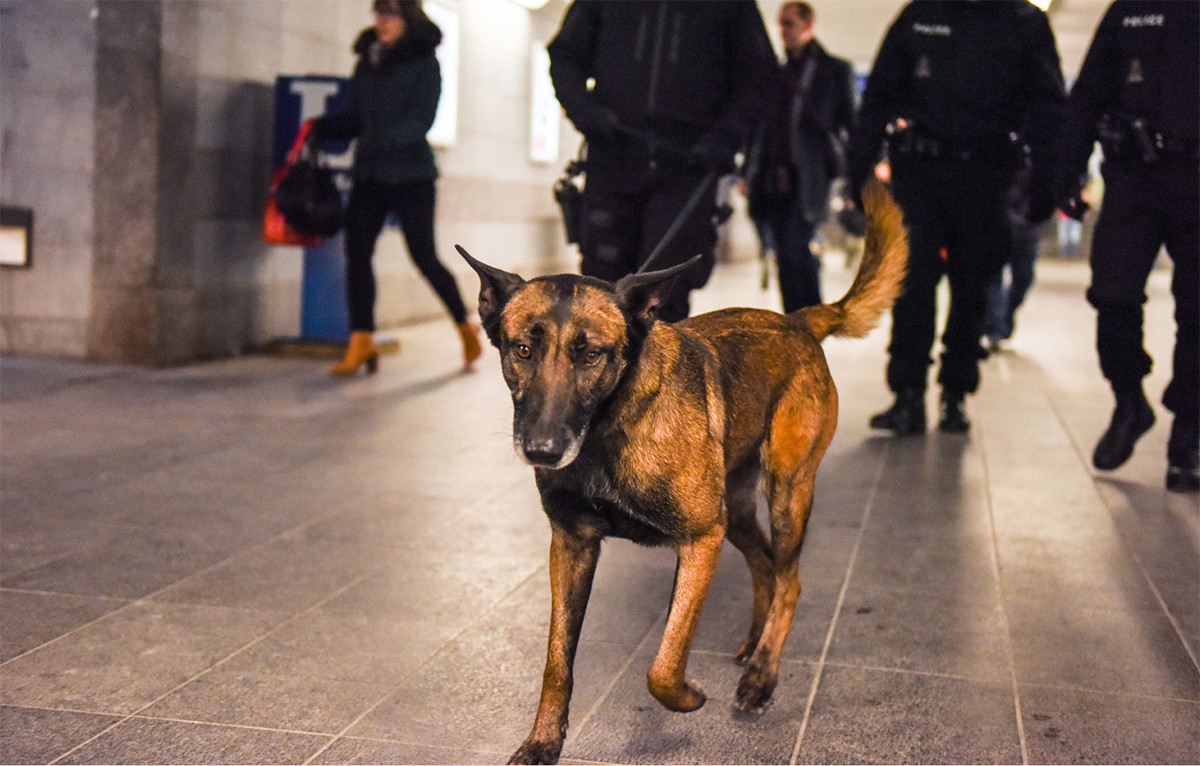The video in which a G4S officer's dog takes a while to release a man on the ground reminds us that working with an intervention animal requires a certain amount of control. During that took place on Saturday evening in the Gare district, the handler .
Speaking to Paperjam, dog-sitting companies said they have their own protocol, which is stricter than the one imposed at national level. For example, at G4S, the dog handlers hired with their dogs must have completed a training course validated in one of the European Union’s member states. The duration and content of the training programme may vary, explains CEO Laurent Jossart. The dogs must have a certificate of sociability and aptitude, be trained in self-defence techniques, train regularly (about once a week) in a dog club, and be vaccinated against rabies.
A full selection
Are the rules for the grand ducal police’s dog handlers more onerous? For one, the process begins when the dog is hired. Although the dogs live in the family environment of their handler they belong to the police which puts them at the officer’s disposal.
In order to select its animals, mainly Malinois Shepherds, the police takes into account several criteria such as "their origin, their state of health, their history and their record". The potential canine recruit then has to stay for a month with the grand ducal police’s squad of 18 handlers and 17 dogs. The animal then passes several tests designed to "evaluate its character and individual qualities". The dog then undergoes a final evaluation and if it passes this stage, it starts its training course.
This is all done with the handler. For three to four months, the pair is trained in detection, defence and obedience. This is followed by a second training course, depending on the dog’s specialisation, which also lasts three to four months. "At the end of each of the two phases, there is an examination," the police adds. "Part of the training takes place abroad and there are regular exchanges with the canine sections of other countries' police forces."
Ongoing training
The work does not stop there. One day is reserved each week for the dog group’s training. Every year, they also undergo several weeks of "refresher" training, with a test at the end. In addition to this, the handlers can choose to do individual training.
“There is a specific order with which the handler orders the dog to let go of the person it has bitten," says the police. "Immediate obedience is imperative. If a dog does not respond immediately, it is eliminated." But despite all efforts, "there is always a residual risk", the force acknowledges. The police also highlights that the owner should only remove the dog's muzzle as a last resort.
The G4S agent's dog was also muzzled, but apparently managed to get free. Pending the outcome of the investigation, the dog and its handler will not be allowed to go out into the field.
This story was first published in French on . It has been translated and edited for Delano.
